On View
New York’s Citywide ‘Stations of the Cross’ Exhibition Highlights Global Injustices Through the Story of Christ
A Lenten art show engages with pressing social issues.
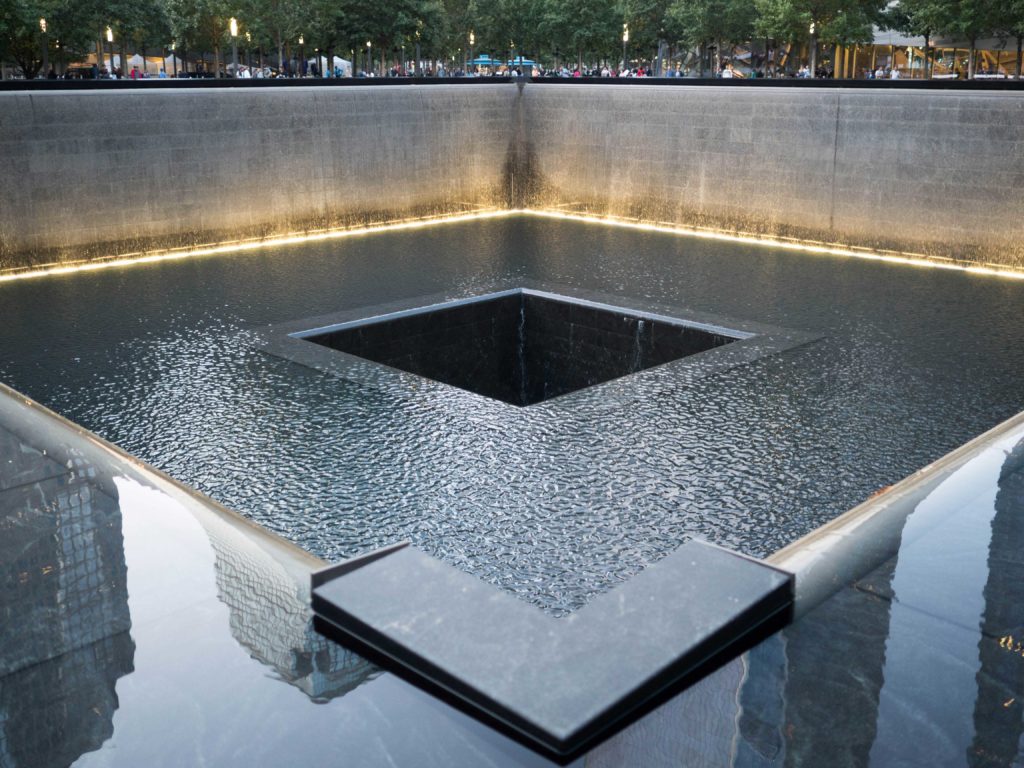
A Lenten art show engages with pressing social issues.

Sarah Cascone

Today is Good Friday, and Christians around the world are marking the occasion with fasting and prayer, many devoting themselves to the Stations of the Cross, which commemorate the suffering and death of Jesus Christ. In New York, art lovers looking to prepare for Sunday’s Easter celebrations can also visit a special “Stations of the Cross” public art exhibition, located at sites stretching the full length of Manhattan, from the Cloisters in Inwood to Ground Zero at the World Trade Center.
It’s the third year for the exhibition, which pairs artworks on permanent display with those specially installed for the Lenten season. You can download an app to guide you through, with an accompanying podcast offering reflections from religious leaders at each station. Each piece represents the different events of the Passion of Christ, with Jesus’s journey to Calvary, the site of the Crucifixion, laid out on a walking trail that includes both secular and religious stops.
“I wanted to find a way of experiencing London as a sacred city,” Aaron Rosen, the project’s co-curator, told Apollo Magazine of the first edition, which included work by the likes of Jean Cocteau and Terry Duffy, as well as a French plaque after an Albrecht Dürer engraving. “This was a nice way to stitch together existing things with new commissions.”
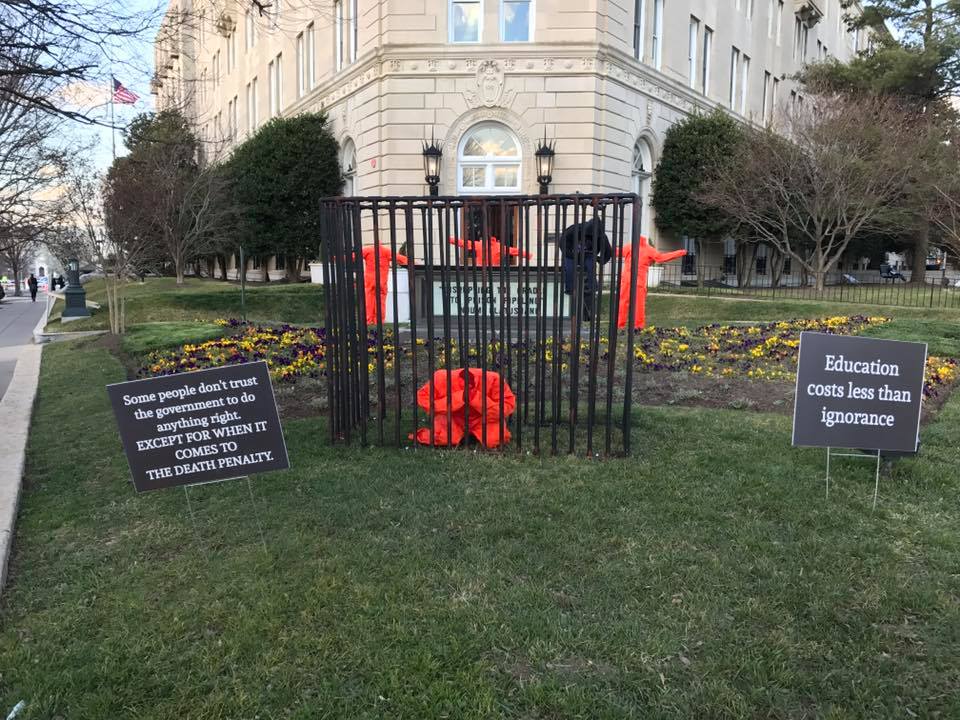
Ndume Olatushani, Disrupting the Cradle to Prison Pipeline (2017). Photo courtesy of the artist.
In 2017, Reverend Catriona Laing, now an exhibition co-curator, helped bring the show to Washington, DC, where she leads the Church of the Epiphany. “This particular Christian devotional lends itself to modern interpretation,” she told the Washington Post at the time. As an art exhibition, “Stations of the Cross” gives visitors an opportunity to reflect not only on the suffering of Jesus but of all those suffering injustice today.
Last year’s exhibition included the work of Ndume Olatushani, who spent 27 years in jail for a crime he didn’t commit. His piece, Disrupting the Cradle to Prison Pipeline, featured a number of orange prison jumpsuits, posed as if worn by an inmate. Representing the station “Jesus Is Condemned,” this bold critique of the justice system sat just across the street from the Supreme Court, on the lawn of the United Methodist building. Other stops in the city included Timothy P. Schmalz‘s controversial Homeless Jesus statue.
“Stations of the Cross” 2018 includes artworks that touch on a number of pressing social issues, with a special focus on the experience of immigrants and refugees, and their feelings of despair, exploitation, abandonment, and hope.
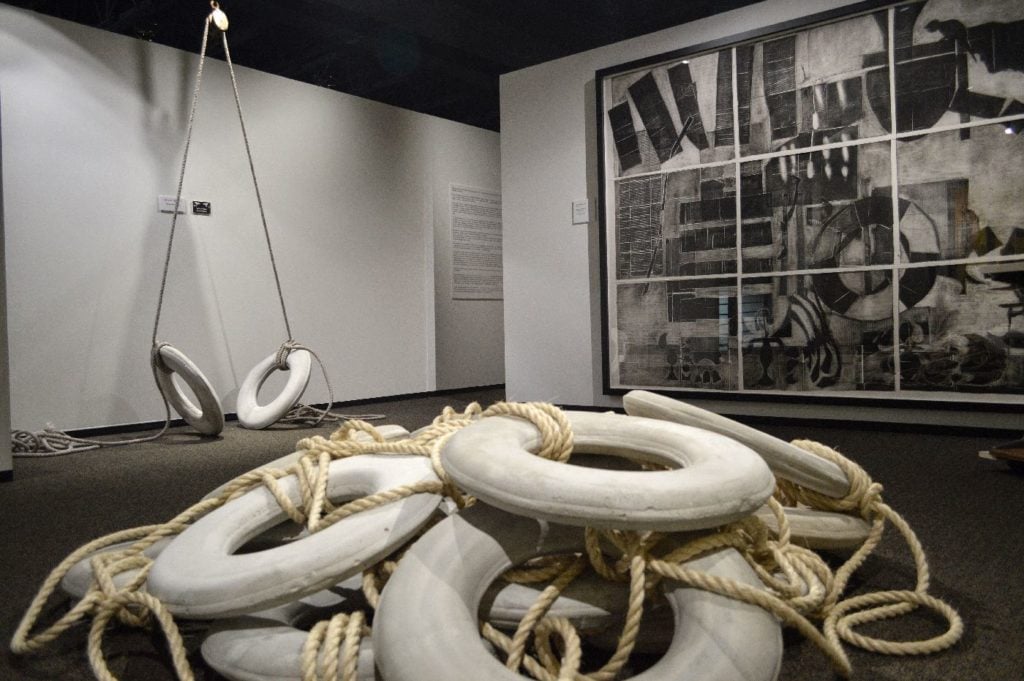
Aithan Shapira, Hope. Photo courtesy of the artist.
For the second station, “Jesus Takes Up the Cross,” curators have selected Aithan Shapira’s sculpture Hope, a cast concrete pile of life preservers. The work, on display at City College, immediately brings to mind refugees who have drowned attempted to leave their war-torn home countries.
At the Leslie-Lohman Museum of Gay and Lesbian Art, the “Crucifixion” itself is represented by Tommy Kha’s photography series “Today Was a Good Day,” which tells the story of Southerners who died of AIDS during the 1980s and ’90s. The exhibition compares the ostracization of the gay community in their hour of need to Jesus’s death on the cross as he called out to God, asking “Why have you forsaken me?”
Black Lives Matters and the debate on gun violence appears at St. Mary’s Episcopal Church in Harlem, where “Jesus Falls for the First Time” is represented by Mark Dukes’s Our Lady of Ferguson and All Those Killed by Gun Violence.
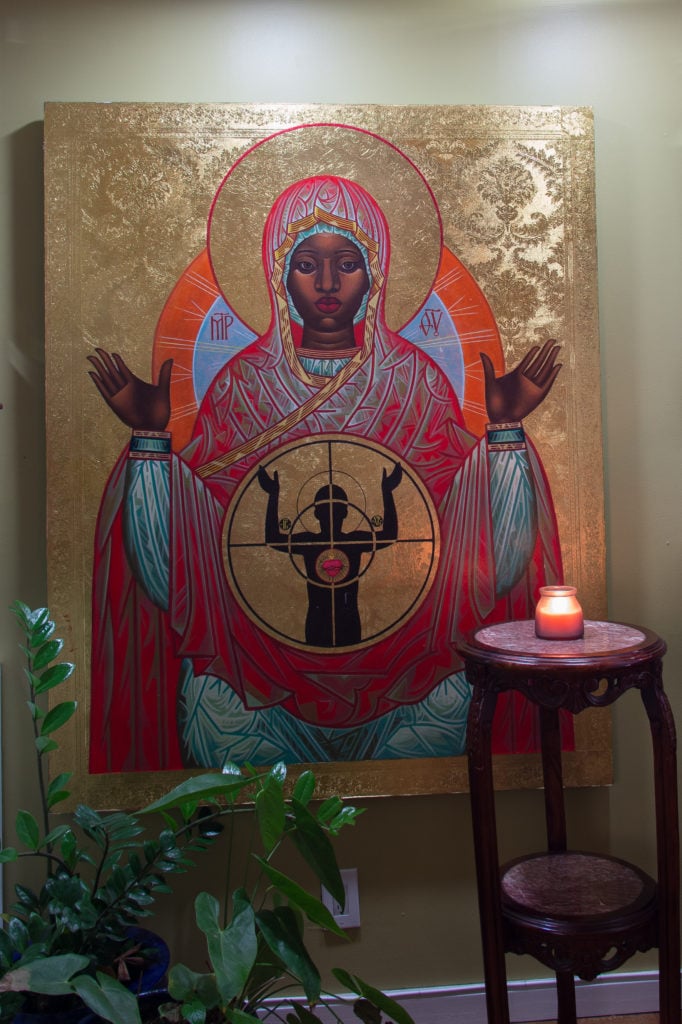
Mark Dukes, Our Lady of Ferguson and All Those Killed by Gun Violence. Photo courtesy of the artist.
What at first glance appears to be a very traditional Byzantine-style religious icon is actually a black figure of the Virgin Mary, her hands up, as if telling someone not to shoot. Over her womb, there is a smaller image of Jesus in the same pose, within the crosshairs of a gun. According to the exhibition description, the piece “offers comfort to all those who have fallen to gun violence, and those who mourn their passing.”
The curators have also created dialogues with other faiths. Jewish artist Siona Benjamin, who is from India, has created a golden triptych referencing Hindu and Buddhist deities for her piece for “Simon of Cyrene Helps Jesus Carry the Cross” at Riverside Church. She was inspired by the concept of Paradise in the afterlife, a common conceit across religions.
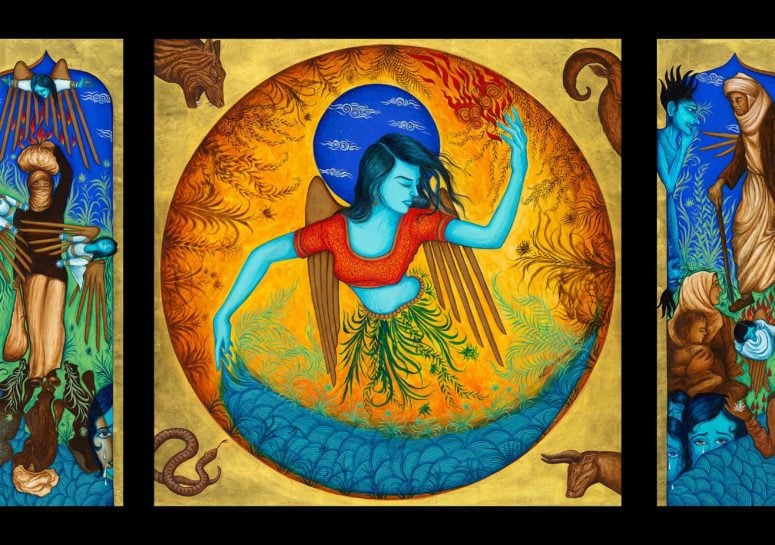
Siona Benjamin, Exodus: I See Myself in You, detail. Photo courtesy of ACA Galleries.
“Looking at the thousands of images that flood the news today of people who are displaced from their homes, these refugees roaming the world are in the constant search for their lost paradise, or their quest for a new one,” Benjamin told the Jewish Art Salon.
For the fourth station, “Jesus Meets His Mother,” on view at the Cathedral Church of Saint John the Divine in the Chapel of St. James, Pakistani artist Dua Abbas was inspired by medieval religious paintings at the Cloisters. Her collage-based video work, Marsiya, features images of her family engaging in traditional Islamic mourning rituals.
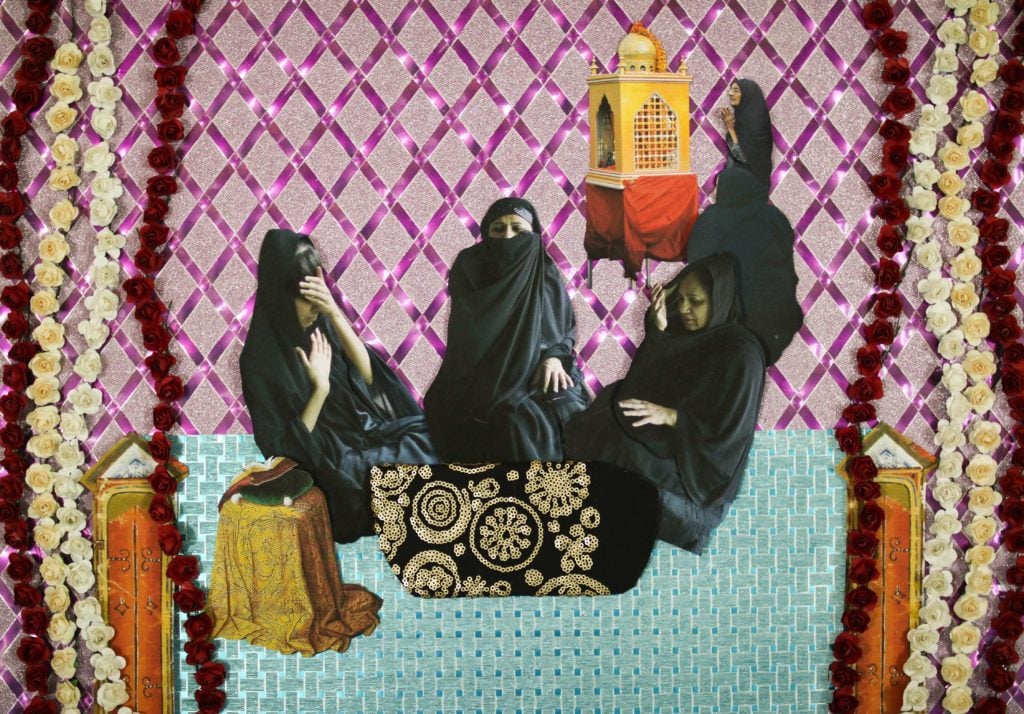
Dua Abbas, Marsiya (2018). Video still courtesy of the artist.
“I was interested in similarities between the figures of Mary, mother of Jesus, and [Muhammad’s daughter] Fatima, mother of Husayn, and the cultures of remembrance that have developed around the sufferings of their sons,” said Abbas in a statement. “I tried to explore themes of maternal devotion, travel and transformation, and the fluidity of faith and its expression.”
The exhibition ends with the “Entombment,” at perhaps the most mournful site in New York City: the gaping twin voids of the National September 11 Memorial (2011). There Michael Arad and Peter Walker’s moving Reflecting Absence provides a fittingly sorrowful end to this artful exercise in faith.
“Stations of the Cross” is on view in various locations in Manhattan, February 14 (Ash Wednesday)—April 1, 2018 (Easter Sunday).